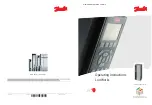
BW Broadcast Technical Manual
Page 20
Further Features
2.7.1 Additional Information
This additional information provides all details required for implementation of the RDS2+ protocol into your
application (broadcast automation system, messaging system, TMC data source etc.).
Please see also the Annex 1 - Communication Protocol Implementation Flowcharts. Some source code examples are
provided on the website.
2.7.2 Unidirectional or bidirectional – What is the difference?
The RDS2+ supports both unidirectional and bidirectional communication modes. Nothing is required to be set, the
mode of operation results only from the method of communication.
2.7.3 Command synchronization
Unidirectional communication:
If sending more commands in sequence, the execution times must be taken into consideration. In other case some
commands may be discarded after internal buffer filling (the RX buffer length is 48 bytes).
The times result from the EEPROM write cycle duration or from the requirement of internal synchronization with
RDS data group order. Most of commands require no perceptible delay due to internal RX line buffering.
Bidirectional communication:
Next command can be sent after receiving confirm sequence from previous command. This ensures right timing
and optimal channel usage in all cases. There is no need to consider any timing or delays.
2.7.4 Useful notes
•
ASCII char. 9 (TAB) is converted to char. 32 (space).
•
In addition to the <Enter> (char. 13, CR) used for command validating, character 26 (EOF) can be used. This allows to
insert the validating character on platforms where char. 13 (CR) is not accepted.
•
The command interpreter ignores other characters in ASCII range 0-31.
•
Space characters (char. 32) are ignored if typed behind validating character on a new line. In this case, the space
characters may be used to realize a delay between two commands.
•
The COM port time-out is 2 minutes. If no character is received during this time, the command line is internally cleared.
Summary of Contents for rds2+
Page 26: ...BW Broadcast Technical Manual Page 26 Technical Data and Specifications 3 1 BLOCK DIAGRAM...
Page 28: ...BW Broadcast Technical Manual Page 28 Annexes...
Page 29: ...BW Broadcast Technical Manual Page 29 Annexes...
Page 34: ...BW Broadcast Technical Manual Page 34 List of Commands...
Page 35: ...BW Broadcast Technical Manual Page 35 List of Commands 4 3 2 Basic Commands...
Page 36: ...BW Broadcast Technical Manual Page 36 List of Commands...
Page 37: ...BW Broadcast Technical Manual Page 37 List of Commands...
Page 38: ...BW Broadcast Technical Manual Page 38 List of Commands...
Page 39: ...BW Broadcast Technical Manual Page 39 List of Commands...
Page 40: ...BW Broadcast Technical Manual Page 40 List of Commands 4 1 3 EON Commands...
Page 41: ...BW Broadcast Technical Manual Page 41 List of Commands 4 1 4 Message Commands...
Page 42: ...BW Broadcast Technical Manual Page 42 List of Commands 4 1 5 Scheduling Commands...
Page 43: ...BW Broadcast Technical Manual Page 43 List of Commands 4 1 6 System Commands...
Page 44: ...BW Broadcast Technical Manual Page 44 List of Commands...
Page 45: ...BW Broadcast Technical Manual Page 45 List of Commands...
Page 46: ...BW Broadcast Technical Manual Page 46 List of Commands 4 1 7 Advanced Commands...
Page 47: ...BW Broadcast Technical Manual Page 47 List of Commands...
Page 48: ...BW Broadcast Technical Manual Page 48 List of Commands...
Page 49: ...BW Broadcast Technical Manual Page 49 List of Commands...
Page 51: ...www bwbroadcast com...
















































